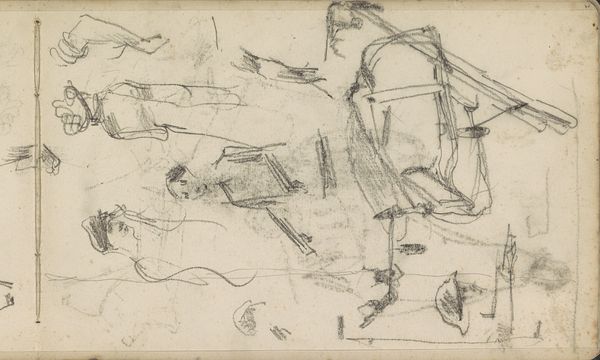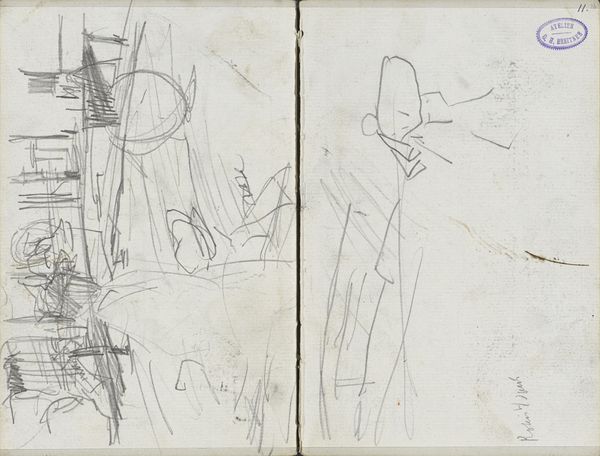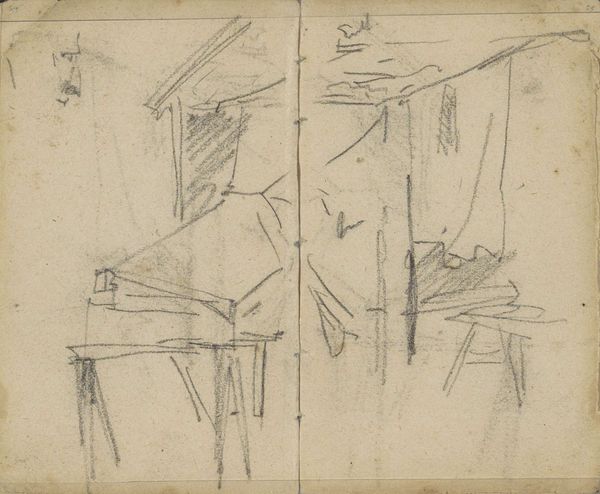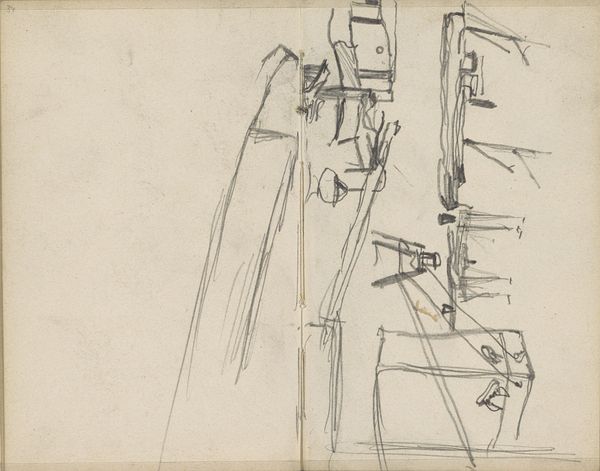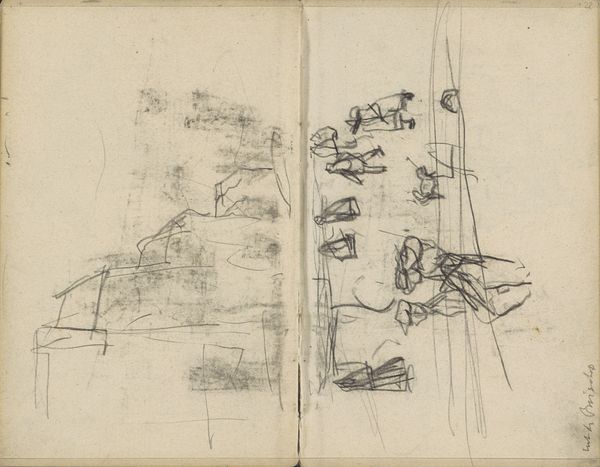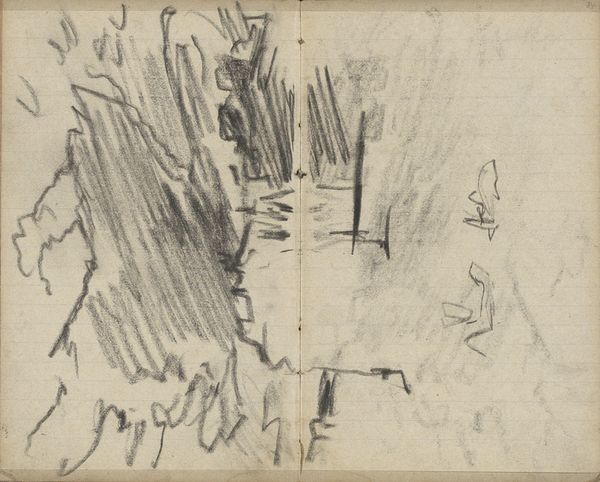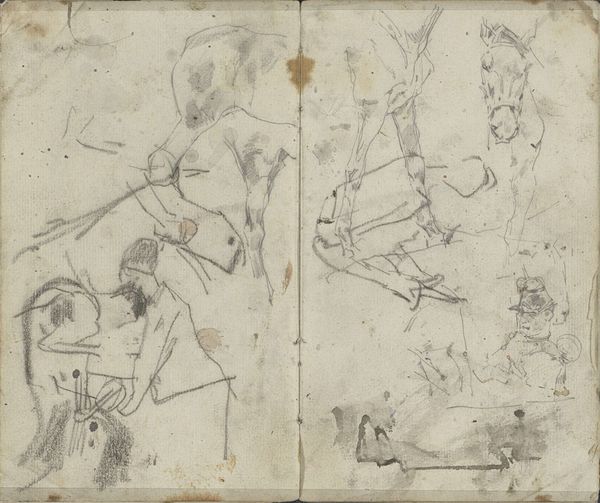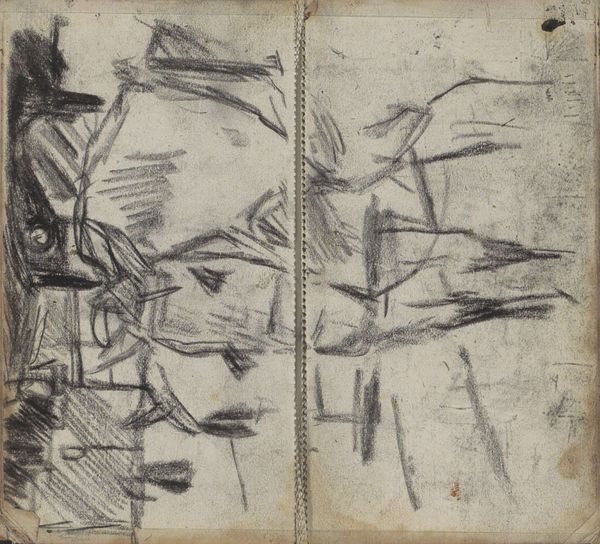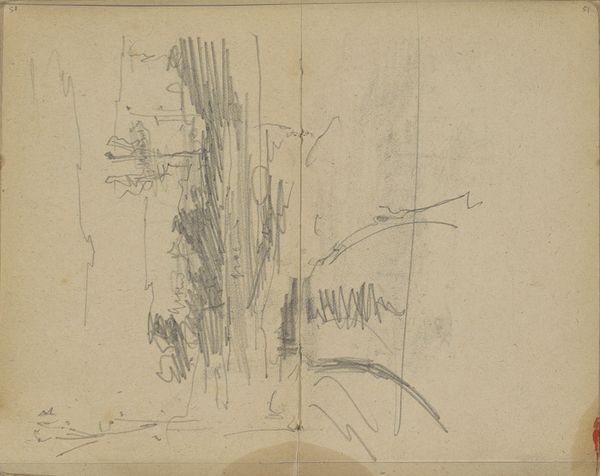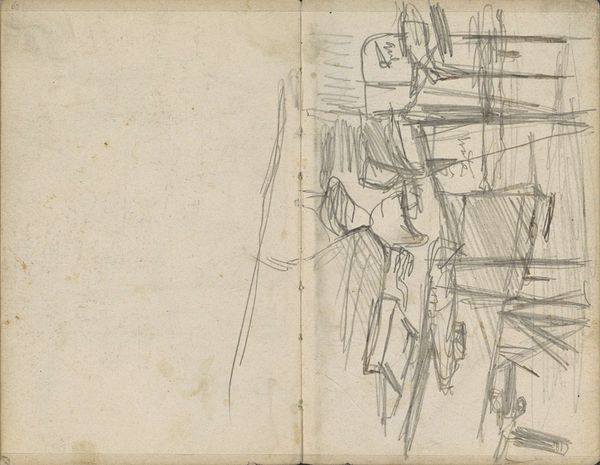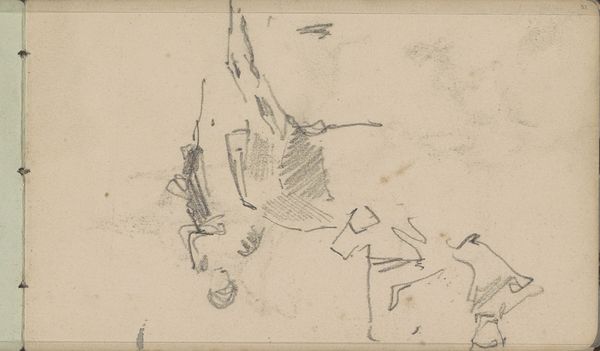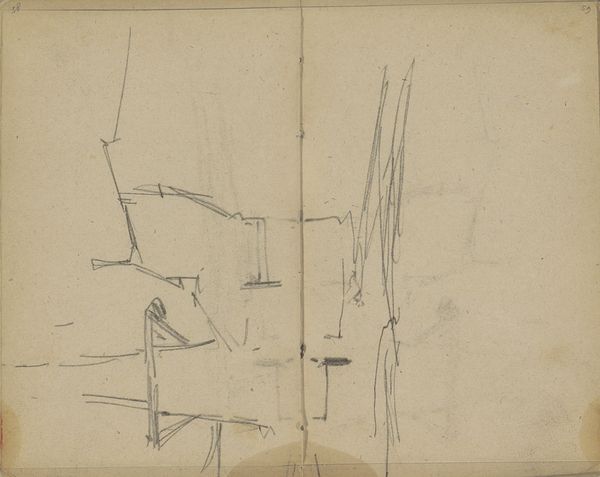
drawing, paper, pencil
#
drawing
#
animal
#
dutch-golden-age
#
impressionism
#
landscape
#
figuration
#
paper
#
pencil
#
horse
#
ashcan-school
#
realism
Copyright: Rijks Museum: Open Domain
Curator: Here we have George Hendrik Breitner’s “Paardenstudies,” or “Studies of Horses,” a pencil drawing on paper dating from around 1881 to 1883. Editor: My first thought? Energy. It's a snapshot, raw and immediate, like catching a glimpse of something powerful just for a second. You can almost feel the twitching muscles. Curator: Absolutely. Breitner, though sometimes associated with the Dutch Golden Age and elements of Impressionism and Realism, he also foreshadows the Ashcan School’s focus on urban life and everyday subjects, which we definitely see glimpses of later in his work. And here, it's these fleeting moments. Editor: Right? Forget posed portraits. This is the real horse, probably stinking, breathing, pawing the ground. I love how economical his lines are. He suggests form more than defines it, which leaves room for my imagination to gallop away. Curator: These "studies" speak to a broader artistic interest in capturing movement and the ephemeral. Remember, this was also the era of Muybridge's motion studies with photography; that focus was circulating among many artists who sought to show motion through innovative representation of form. What makes it stand apart from photographs is it has feeling; Breitner wasn’t aiming for photographic accuracy; he sought to explore the essence of his subjects. Editor: I agree, it's feeling over fact. He captures something vital, the horse-ness of the horse! It's a little bit romantic and wistful to think what their days were filled with; I wonder if Breitner wondered too. What stories could they tell? Curator: The work serves as an insight into the artistic process as well; these were the initial forays into observing, drafting, and experimenting. You see the underpinnings, so to speak, before the eventual painting or a more formalized drawing takes shape. You gain such insight from witnessing the development and skill that great masters go through, and witness where artistic brilliance takes root! Editor: Yeah, it's like looking at a musician's practice scales versus hearing the full symphony. There is so much inherent value and raw talent in this little practice. What is evident for me, in particular, is that drawing feels so elemental and basic as a beginning point for the artist; but at the same time, even raw drawing is inherently complex in so many ways! Curator: Very true! Breitner’s work offers such unique insight in those dualities. Editor: Yes, such a wonderful drawing! Thanks for providing context on it.
Comments
No comments
Be the first to comment and join the conversation on the ultimate creative platform.
